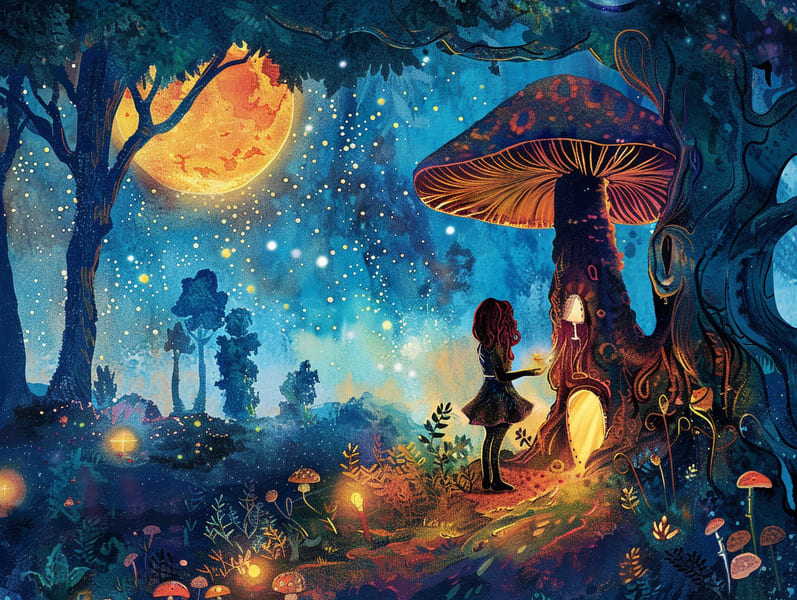The Inception of Old Fairy Tales and the Everlasting Magic.
The Inception of Old Fairy Tales and the Everlasting Magic.
Blog Article

Popular fairy tales have long histories. These tales have been recounted from one generation to the next far before they were ever inscribed. They originated from a variety of backgrounds, including Middle Eastern traditions. They were initially passed along among grown-ups, often carrying themes and messages aligned with the societal norms and beliefs of the time.
The Grimm brothers, Jacob and Wilhelm (the Grimm brothers), were among the first to gather and publish many of these beloved fairy tales. Their anthology, "Grimm's Children's Stories," included tales like "Cinderella," "The Story of Hansel and Gretel," and "Schneewittchen," which have since become essentials in the world of children's fairy tales. Similarly, Hans Andersen's delightful tales, such as "The Mermaid's Tale," and "The Little Duckling," have captured hearts worldwide, establishing their place in the pantheon of classic fairy tales.
Even though they are old, fairy tales remain as significant as ever, especially as children's night stories. These charming stories are now available in diverse formats, including vividly illustrated books, magical animations, and online storybooks.
Their lasting appeal can be traced to several magical reasons:
Vital Lessons: Traditional fairy tales often convey important moral lessons. Stories like "The Wolf and the Liar" teach the value of sincerity, while "The Tortoise and the Hare" demonstrate the values of perseverance and unassuming nature. These narratives offer the young clear distinctions between right and wrong, shaping their moral compass in a mild yet deep way.
Compassion and Insight: Traditional fairy tales frequently feature individuals facing challenges and struggles, inspiring readers to understand with their struggles and celebrate their triumphs. For instance, "The Story of Beauty and the Beast" reveals the importance of appreciating inner worth to understand the real character of a individual, fostering perception and awareness.
Cultural Awareness: Many old fairy tales are interwoven with the cultural contexts from which they sprang. Immersing in these fairy tales can provide delightful insights into different societies, encouraging a sense of global insight and acknowledgment.
Inventiveness and Fantasy: The fantastical elements in classic fairy tales—supernatural elements—spark children’s creative minds. These tales lead readers to enchanted realms, activating imaginative thinking and a sense of amazement that stays a lifetime.
Classic fairy tales are not only whimsical but also didactic. They serve as alluring tools in nurturing various intellectual and emotional capacities in little ones. When ancient fairy tales are read aloud, they strengthen language skills by teaching new phrases and intricate sentence structures. This practice also cultivates hearing perception and attentiveness, as young readers remain attentive, looking forward to see what happens next.
Furthermore, conversing about the themes and characters of fairy tales can advance intellectual skills and reasoning skills. Young ones are instructed to identify patterns, expect results, and make sense of cause and effect. These reflections also support children voice their thoughts and feelings, cultivating their emotional intelligence.
In today’s technological age, the availability of online fairy tales has made these stories more attainable than ever. Online resources and apps supply comprehensive collections of popular fairy tales that can be perused or played anytime, anywhere. Fairy tales narrated are particularly in demand, extending an charming way for the young to be a part of these fascinating tales. Audio stories and read-to-me videos carry characters and settings to life, often augmented by mesmerizing background sounds and soundtracks that improve the narrative adventure.
The lasting appeal of ancient fairy tales lies in their ability to modify to new eras while keeping their essential themes. Contemporary reimaginings of these tales often bring in more inclusive characters and modern settings, making them pertinent to today’s audience. However, the basic principles of boldness, understanding, and impartiality remain unchanged, continuing to impact listeners of all ages.
Fairy tales also offer a sense of security and knownness. They give a ordered narrative with a straightforward beginning, middle, and end, often wrapping up with the culmination of conflicts and the triumph of morality over wickedness. This steadiness can be encouraging for kids, allowing a sense of solidity in an variable world.
Ancient fairy tales continue to enthrall and edify new generations, maintaining their spell and impact in modern society. As children's night stories, they present to a perfect blend of allure and teaching, backing moral values, empathy, and creativity. The abundance of online fairy tales and the widespread nature of fairy tales narrated warrant that these traditional fairy tales remain acquirable to new generations.
By retaining and communicating these fairy tales, we continue to extol the rich tapestry of legends and cultural heritage. Whether you are browsing a artistically illustrated book, perusing a digital library, or hearing an voice book, the mystique of ancient fairy tales is always within reach. These narratives point out of the everlasting effect of fairy tales and its ability to bind us across epochs and places.
No matter if you are perusing a richly illustrated book, viewing a internet library, or playing an read-aloud book, the captivation of Grimm's fairy tales is always awesome site within reach.
These stories show us of the unwavering nature of narratives and its ability to bind us across epochs and places, weaving a spell that delights and instructs alike.